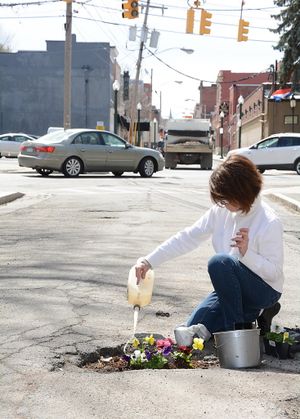Can Michigan stop potholes?
Potholes, we all know, suck.
They break our cars and influence our politics. And they come from the freeze-thaw cycle that bedevils Spokane and other wintry locales. And they never seem to go away.
Our first plan to combat potholes by driving our cars so much we change the climate and stop winter all together hasn't worked. So we need a new plan.
That's where some smart Michiganders come in.
A recent report by Gilbert Baladi and Pegah Rajaei, pavement engineers at Michigan State University, may have cracked the code. It goes something like this: Water soaks into pavement, softening it. In the winter, the water freezes and expands, sometimes enough to tear the pavement asunder. But the real destruction happens when the water- and ice-weakened road is driven on by huge, heavy trucks. In short, on their own, winter and trucks don't wreck roads. But together, they are pavement destroyers.
Baladi and Rajaei may have found a way to preserve pavement and forever do away with potholes (or at least minimize them). By using embedded road sensors, the engineers determined when the roads are too weak to handle trucks.
And it works, as CityLab says.
From CityLab:
And it works. Baladi says his team has tested the statistical model in other states, and it accurately predicts when roads are thawed enough for heavy vehicles to drive on them, destruction-free. “The model we developed works for the Upper Peninsula, the Lower Peninsula, Minnesota, and Wisconsin,” he says. “It doesn’t require very expensive parameters, and doesn’t require expensive tests to get those parameters.”
Stupid potholes. We've thought you out of existence. With our minds!

